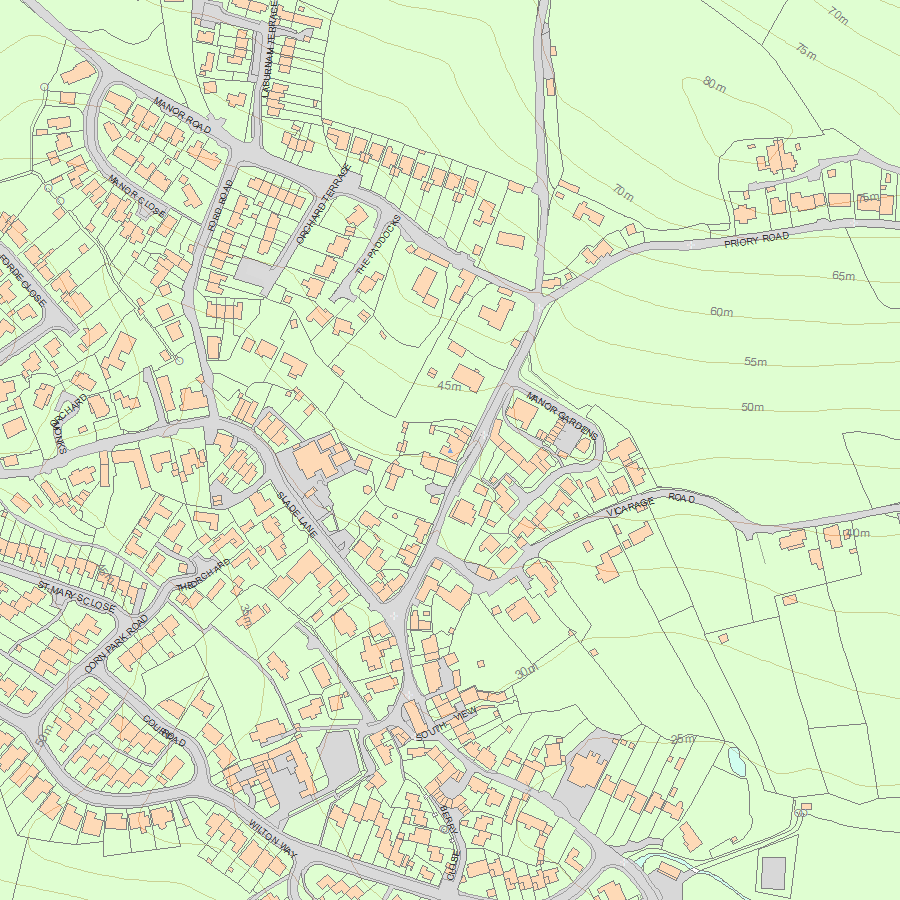List Entry Summary
This building is listed under the Planning (Listed Buildings and Conservation Areas) Act 1990 as amended for its special architectural or historic interest.
Name: ROSE COTTAGES*
List Entry Number: 1334137
Location
ROSE COTTAGES*, 3, SLADE LANE
The building may lie within the boundary of more than one authority.
County: Devon
District: Teignbridge
District Type: District Authority
Parish: Abbotskerswell
National Park: Not applicable to this List entry.
Grade: II
Date first listed: 23-Aug-1955
Date of most recent amendment: 17-Jul-1987
Legacy System Information
The contents of this record have been generated from a legacy data system.
Legacy System: LBS
UID: 84733
Asset Groupings
This List entry does not comprise part of an Asset Grouping. Asset Groupings are not part of the official record but are added later for information.
List Entry Description
Summary of Building
Legacy Record - This information may be included in the List Entry Details.
Reasons for Designation
Legacy Record - This information may be included in the List Entry Details.
History
Legacy Record - This information may be included in the List Entry Details.
Details
SX 86 NE ABBOTSKERSWELL SLADE LANE, Abbotskerswell
3/29 No. 3 Rose Cottages (formerly
- listed as Nos. 3, 4, 5, 6 Rose
23.8.55 Cottage
GV II
House, originally farmhouse, formerly 4 cottages. Probably C16 with C17
modifications and additions, C19 and C20 alterations. Rendered rubble and cob
walls. Gabled ended roof to main block is slate at the front, corrugated asbestos
at the rear. Rear left-hand wing has gable ended corrugated asbestos roof; right-
hand wing has gable ended asbestos slate roof. 2 rendered rubble stacks to main
block; one axial and one projecting from left gable end with offsets. Similar
lateral stack at side of left-hand wing.
Complex evolution of plan: originally 3 room and through-passage, lower room to the
left; possibly open to the roof with central hearth to hall and inner room. Lower
end always ceiled. Hall and inner room ceiled in circa mid C17. Hall stack
inserted at this stage backing onto passage. Gable end stack added to lower room.
2 one room plan rear wings added in C17, one behind lower room the other behind
hall/inner room. This one has a lateral fireplace and is probably mid C17. The
other wing is unheated and may be later C17. The house was divided into 4 cottages
probably in the C19 and is likely at this stage to have had the roof raised at the
lower end of the front block to create an attic. Converted back into one house in
later C20.
2 storeys with attic to left-hand end of front block. Asymmetrical 4 window front
with higher roof line to left-hand side. All C20 casements without glazing bars, 2-
light on first floor, 3-light on ground floor. The 3 windows on the left-hand side
have hoodmoulds which extend further than the windows. To left of centre is C20 2-
light dormer to attic. Doorway to passage at centre has C20 part-glazed door behind
C19 slate gabled open fronted porch. On the left-hand gable wall of this part, to
the right of the stack, is a doorway, formerly a window, which has below the
hoodmould with ovolo-moulded wood lintel with jewel and carved rosette stop exposed
at left end.
At the rear 2 gabled wings project, one at each end, with c. late C19 outshut
inbetween. The right-hand wing has 2 windows on its outside face with hoodmoulds
above.
Interior contains several good features, more are likely to be concealed. The lower
room has a chamfered longitudinal beam with ogee stops, according to the owner the
concealed joists are also decorated. Probably late C17 plaster cornice partially
survives in this room.
Hall has ovolo-moulded half beam above fireplace. Modern grate. Where the screen
to the inner room formerly stood is another ovolo-moulded half beam with peg holes
for the muntins. At the higher end of the former inner room is another ovolo-
moulded half beam. At the rear of the hall is a mid C17 square-headed wooden
doorframe, ovolo-moulded with high hollow step stops. The room in this rear wing
has a fireplace with cambered wooden lintel which is chamfered with run-out stops.
One side-pegged jointed cruck over the lower end of the hall is visible which is
clean on the lower side, the other side is not visible. The remainder of timbers
over the main block are C19 and C20 replacements. The rear left-hand wing has
probably late C17 substantial principals with threaded purlins and curved collars
halved and pegged on. According to the owner some roof timbers were recently
removed from the middle and higher end of the main block which were curved
principals apparently blackened - which suggests that originally the house may have
had an open hall. Also removed from the house was a probably early C17 plank and
muntin screen which had chamfered muntins with hollow steps, its original position
is unclear, some of the timbers still survive.
Whilst this house may be a basically late-medieval hall house, its chief interest
lies in the substantial additions made in the C17 and the features surviving from
this period when it was evidently one of the more important farmhouses in the
village.
Listing NGR: SX8572168937
Selected Sources
Legacy Record - This information may be included in the List Entry Details
Map
National Grid Reference: SX 85721 68937
The below map is for quick reference purposes only and may not be to scale. For a copy of the full scale map, please see the attached PDF - 1334137.pdf - Please be aware that it may take a few minutes for the download to complete.

© Crown Copyright and database right 2018. All rights reserved. Ordnance Survey Licence number 100024900.
© British Crown and SeaZone Solutions Limited 2018. All rights reserved. Licence number 102006.006.
This copy shows the entry on 19-Jul-2025 at 05:35:28.


